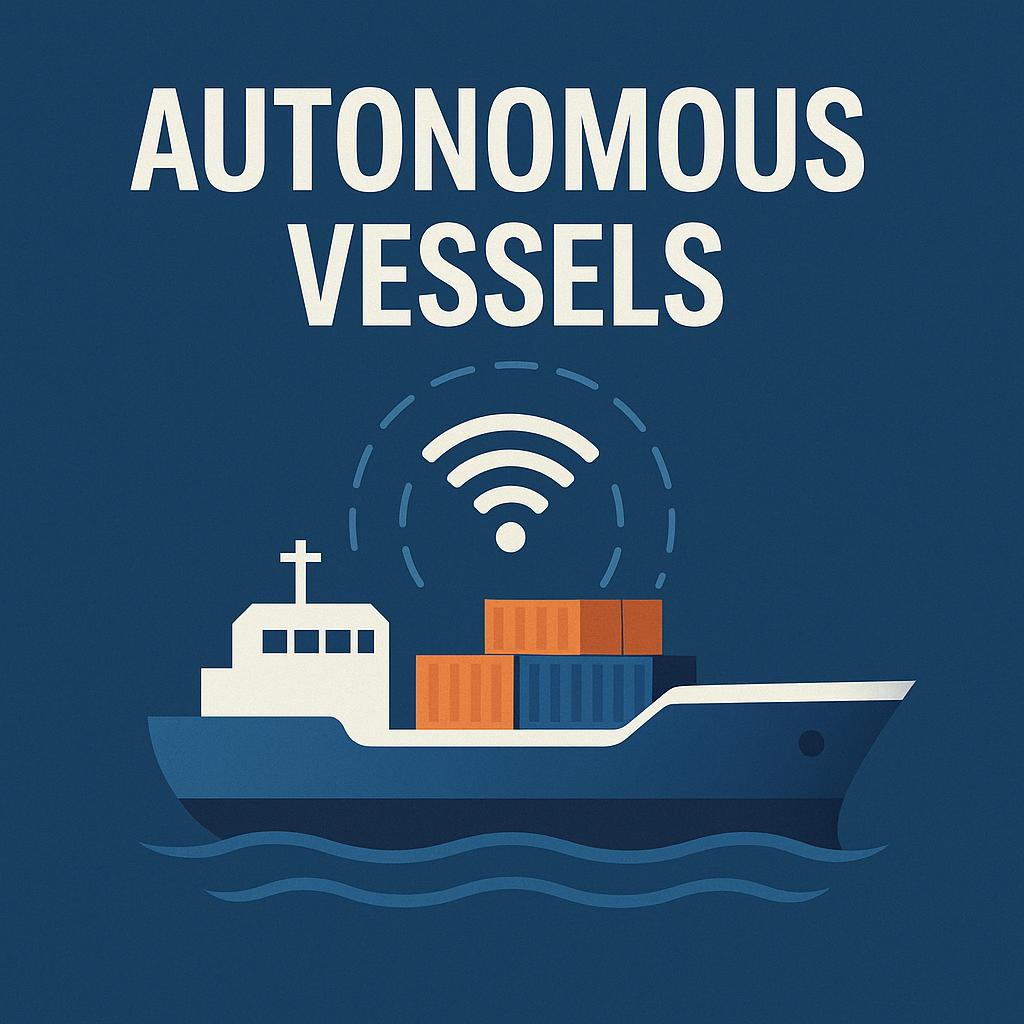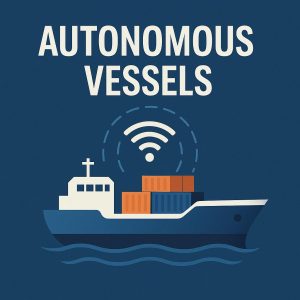Discover the top 10 autonomous vessels making waves in the shipping industry. Learn how smart ships are reshaping global trade, safety, and sustainability in this in-depth guide.
Why Autonomous Vessels Matter in Modern Maritime Operations
The global maritime industry is on the cusp of a technological revolution. Autonomous vessels—once a concept confined to science fiction—are now very real and rapidly redefining how we think about navigation, operations, and maritime safety.
From short-sea shipping and ocean mapping to cargo transport and research missions, these self-sailing vessels are being developed and deployed around the world. Backed by advances in AI, machine learning, sensor fusion, remote connectivity, and satellite navigation, autonomous ships promise to lower costs, reduce emissions, improve safety, and solve crew shortage challenges.
According to the International Maritime Organization (IMO), the adoption of Maritime Autonomous Surface Ships (MASS) is advancing steadily, with regulations and pilot programs evolving alongside the technology. As of 2024, several vessels are already operational or in advanced testing phases, signaling a profound shift in how maritime operations are managed.
In this article, we explore the top 10 autonomous vessels that are making headlines globally—pioneering the future of unmanned, intelligent shipping.
1. Yara Birkeland (Norway)
Dubbed the world’s first fully electric and autonomous cargo ship, the Yara Birkeland began autonomous operations in 2022. Developed by Yara International and Kongsberg Maritime, this vessel is designed to replace 40,000 truck journeys annually.
Key Features:
-
Length: 80 meters
-
Cargo: Fertilizer (120 TEU capacity)
-
Power: Battery-electric propulsion (7 MWh)
-
Navigation: Remote monitoring with AI-based decision-making
Regulatory Note: The project aligns with IMO’s push for zero-emission, short-sea shipping solutions under its GHG strategy.
More Info: Kongsberg Maritime – Yara Birkeland
2. Mayflower Autonomous Ship (MAS400, UK/US)
A modern-day homage to the original Mayflower, this AI-powered vessel is designed for transatlantic science missions without a crew.
Highlights:
-
Developed by ProMare and IBM
-
Uses AI Captain, IBM’s machine learning platform
-
Collects data on climate change, marine pollution, and ocean biodiversity
-
Relies on cameras, radar, and edge computing
Despite facing technical setbacks during its 2021 maiden voyage, it later completed a successful transatlantic journey in 2022.
More Info: MAS400 Project
3. Sea-Kit Maxlimer (UK)
This uncrewed surface vessel (USV) is built for survey missions, hydrographic mapping, and subsea inspection tasks. It gained fame by completing a 22-day mission across the North Sea.
Specs:
-
Remote control + autonomous mode
-
Carries payloads for sonar, ROVs, or scientific instruments
-
Range: over 2,500 km
Award-Winning: The vessel won the Shell Ocean Discovery XPRIZE, pushing boundaries in uncrewed deep-sea exploration.
More Info: Sea-Kit International
4. AutoDocking Ferries (Norled, Norway)
Autonomous ferries, such as those operated by Norled, have adopted autodocking systems developed by Wärtsilä and Kongsberg. These allow vessels to:
-
Approach and dock automatically
-
Adjust for wind, tide, and obstacles
-
Improve turnaround times and reduce fuel burn
Case Study: The MF Folgefonn completed the world’s first fully autonomous docking operation with passengers on board.
More Info: Wärtsilä SmartDock
5. Hanseatic Spirit (Germany)
While not fully autonomous, this luxury expedition cruise ship from Hapag-Lloyd Cruises uses smart bridge systems to assist with semi-autonomous navigation in polar regions.
Smart Tech:
-
Integrated automation systems
-
Dynamic positioning
-
Ice radar and navigation AI
This reflects how autonomous technologies are being integrated incrementally into traditional vessels.
6. ReVolt Concept Ship (Norway)
Developed by DNV and SINTEF, ReVolt is a 60-meter fully electric and autonomous vessel concept designed for inland and coastal cargo transport.
Design Features:
-
Lithium-ion batteries
-
100 TEU capacity
-
70% reduced operating cost vs conventional vessels
-
Top speed: 6 knots
Though still a prototype, the ReVolt presents a compelling case for zero-emission coastal shipping.
More Info: DNV – ReVolt
7. ASV Global C-Enduro (UK/US)
The C-Enduro is a solar-diesel hybrid USV used for long-duration ocean monitoring. It supports scientific missions for:
-
NOAA
-
UK Hydrographic Office
-
Offshore energy operators
With endurance of over 60 days and multiple sensors, it exemplifies how autonomy is transforming maritime data acquisition.
More Info: L3Harris ASV Global
8. MOASHIP Autonomous Tug (South Korea)
Hyundai Heavy Industries, in partnership with the Korea Institute of Ocean Science and Technology, successfully tested an autonomous tugboat capable of:
-
Route tracking
-
Collision avoidance
-
Remote maneuvering in port operations
Why It Matters: Tugs are ideal candidates for automation due to their short-range, repetitive operations, making port logistics safer and more efficient.
9. Zhi Fei (China)
China’s largest autonomous ship, Zhi Fei, launched in 2021. Built by the Qingdao Pilot National Lab, it serves as a testbed for MASS development in Chinese waters.
Features:
-
Length: 80 meters
-
AI-supported navigation
-
Designed for cargo and research roles
-
Hybrid control: autonomous, remote, and manned
It showcases China’s ambition to become a global leader in smart shipping and maritime AI.
10. Ulstein Thor (Norway)
The Ulstein Thor is a concept nuclear-powered “recharging vessel” designed to provide power to electric expedition ships in remote regions.
Innovation:
-
Uses molten salt reactor (MSR) technology
-
Can function autonomously
-
Supports decarbonization of long-range electric vessels
Though still conceptual, it signals an emerging trend: mobile, autonomous energy platforms at sea.
More Info: Ulstein Thor Concept
FAQ: Autonomous Vessels in the Maritime Industry
Q1: Are autonomous ships legal today?
A: Currently, regulations are evolving. The IMO is working on guidelines through its MASS scoping exercise, and some flag states (like Norway and Japan) permit autonomous operations in designated zones.
Q2: Will autonomous ships replace human crews?
A: Not entirely. The industry is moving toward semi-autonomous ships with remote oversight or smaller onboard crews. Fully crewless ocean-going ships are still years away from wide adoption.
Q3: How do autonomous ships navigate?
A: They use a combination of GPS, radar, LiDAR, AIS, cameras, and AI algorithms for decision-making and obstacle avoidance.
Q4: What are the benefits of autonomous shipping?
A: Reduced labor costs, enhanced safety (especially in dangerous waters), lower fuel use through optimized routing, and continuous operations.
Q5: What are the main risks?
A: Cybersecurity, regulatory gaps, sensor failures, and public trust. As with autonomous cars, redundancy and human override systems remain critical.
Conclusion
Autonomous vessels are no longer distant prototypes—they are here, learning, adapting, and evolving. From electric ferries and smart tugs to research drones and AI-powered cargo ships, these vessels are redefining what it means to navigate the seas.
As the maritime world embraces digitalization, autonomy, and decarbonization, these top 10 vessels represent the vanguard of the industry’s transformation. For shipowners, regulators, engineers, and maritime students, understanding the current landscape of autonomous shipping is not just exciting—it’s essential.
Call to Action: Want to learn more about MASS technologies, AI navigation, and remote vessel operations? Visit our Autonomous Shipping Knowledge Hub.
References
-
International Maritime Organization. (2023). Regulatory Scoping Exercise for MASS. https://www.imo.org
-
Kongsberg Maritime. (2023). Autonomy in Maritime Operations. https://www.kongsberg.com
-
IBM. (2022). MAS400 Project Overview. https://www.ibm.com
-
Sea-Kit International. (2023). Uncrewed Vessel Technology. https://www.sea-kit.com
-
Wärtsilä. (2023). SmartDock and Autonomous Ferries. https://www.wartsila.com
-
DNV. (2023). Autonomous and Remote-Controlled Ship Concepts. https://www.dnv.com



